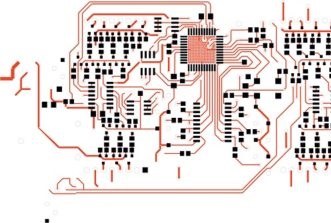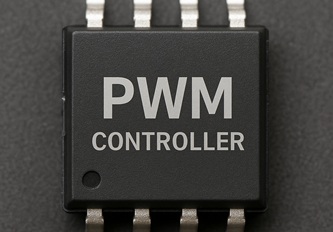Programmable Logic Devices (PLD) Overview
01/03/2020, hardwarebee
What is PLD?
PLD stands for Programmable Logic Device. A Programmable Logic Device is an individual, programmable electronic chip which can be used as an element to build digital circuits that can be reconfigured. Programmable Logic Devices have programmable elements that can be modified and programmed using a special program even after the product left the manufacturing site. Compared to a PLD, a typical ASIC/chip consists of logic gates and has a fixed function that it has been designed and programmed to perform one functionality. Unlike these typical integrated circuits, Programmable Logic Devices can be reconfigured to perform various functions based on the requirements of the user.
How Do Programmable Logic Devices (PLDs) Work?
Programmable logic devices contain multiple logic elements such as flip flops as well as AND and OR gates which can be configured by the user. The internal logic and connections may be modified by the user during the programming process which is done using a dedicated software application.
Programmable logic devices sometimes consist of a number of fuses which are intact in the original, unprogrammed PLD. when you are programming the logic device, and confirming the interconnections, you essentially blow out the fuses to make the connections permanent in a particular configuration as per your design.
In order to program a Programmable logic device, you need to make sure that you are using the right software and the right language to communicate with the technology. You will most likely be using a hardware description language, or HDL. If you are looking for a higher level language for complex devices, you can use the likes of VHDL or Verilog.
You would also need a device programmer in order to move the logic pattern that you have designed in the given hardware language onto the Programmable logic device.
Types of Programmable Logic Devices (PLDs)
There are several different types of Programmable Logic Devices, each of which has various programmable features. They are as follows:
- Programmable Read Only Memory (PROM)
In a typical Programmable Read Only Memory, or PROM, the input is fed into a fixed AND array which acts as the decoder, and then is processed through a programmable OR array before giving the output.
- Programmable Array Logic (PAL)
A Programmable Array Logic, or PAL device comprises of a programmable AND array and then fixed OR array in that sequence. As such, the output of these devices would be the combination of the inputs in the form of sum of products. These devices usually have an array of transistor cells.
- Programmable Logic Array (PLA)
A PLA, or Programmable Logic Array, comprises of two programmable AND and OR arrays one after the other, sandwiched between the input and the outputs.
- Complex Programmable Logic Device (CPLD)
In a CPLD, or a Complex Programmable Logic Device, there is a set of blocks, each comprising of Programmable logic devices which are then connected by a global interconnection matrix. As a user, you have the ability to program the individual Programmable logic device blocks, as well as the interconnects that adjoin the various PLD blocks with each other. Read more about CPLDs here.
- Field Programmable Gate Array (FPGA)
FPGAs typically consist of a programmable logic matrix, a programmable routing matrix, and programmable inputs/outputs. The programmable logic structure is basically a two dimensional array of logic blocks which can be configured by the user. The programmable routes are the routing channels and connection or switch boxes that connect the various blocks and pins together in the circuit. Ultimately, you can also configure the I/O buffer pins and determine which pins on the chip function as the input pins, output pins, or the I/O pins. Read more about FPGAs here.
Why Should You Used PLDs?
- Programmable logic devices offer the user more flexibility during the design cycle. This is because the designing operations are based on changing the whole programming file. These changes can be tangibly observed inside the working parts and design of the PLD.
- Programmable logic devices are comparatively smaller in size and take up less board space. As a result, they also have a shorter assembling time and a relatively simpler assembly process in and of itself. This also results in cost reduction.
- Programmable logic devices tend to consume a lower degree of power and are also characterized by having fewer set of interconnections in the packages as compared to alternative options. All these features translate into great system reliability as well as flexibility.
- PLDs are highly field-programmable- this means that the chip or circuit can be programmed completely outside the manufacturing environment. You do not necessarily need to make the changes during the building of the circuit as the modifications can be made at a later point, as needed.
- The ability to modify the configuration of the device makes Programmable logic devices an extremely attractive option thanks to its customizability and personalization.
- The decreased number of integrated circuits being used when substituted with PLDs increases the reliability of the circuit, especially since there is a lesser number of interconnects.
- Since Programmable logic devices are erasable and modifiable, they are ideal for situations or technology which needs consistent updates or if it needs to be reused at some point in its life cycle.
Programmable logic devices have enabled many users, designers, and manufacturers to come up with incredibly innovative and phenomenal technology that is centered around producing logic based solutions across a variety of applications. The reduced power consumption, lower cost amount, and integration of so many features that are simply not a possibility with most of the other alternatives, all make Programmable logic devices a much favored and preferred option for multiple users belonging to a number of different backgrounds and industries.
PLD in Digital Electronics
Programmable Logic Devices (PLDs) are digital electronics devices that can be programmed to perform a wide variety of functions in digital circuits. They are commonly used in digital electronics to implement complex logic functions, such as state machines, controllers, and data processing circuits.
PLDs are used in a variety of applications, including computers, telecommunications, industrial control systems, and consumer electronics. They are particularly useful in designs where the logic function is expected to change, as they can be reprogrammed to perform different functions without the need to physically modify the circuit. Some ideas for its usage in digital electronics are:
- Designing and implementing custom digital circuits: PLDs can be programmed to implement a wide range of digital circuits, from simple gates to complex digital systems.
- Building digital controllers: PLDs can be used to build digital controllers for various systems, such as robots, drones, or industrial process control systems.
- Creating digital interfaces: PLDs can be used to interface different digital devices, such as sensors, actuators, or microcontrollers.
- Implementing digital filters: PLDs can be used to implement digital filters, such as low pass, high pass, or band pass filters, for signal processing applications.
- Implementing digital decoders and encoders: PLDs can be used to implement digital decoders and encoders, such as parity checkers, error detection/correction circuits, or data compression algorithms.
- Designing digital clocks: PLDs can be used to design digital clocks and timers, such as stopwatches or countdown timers.











